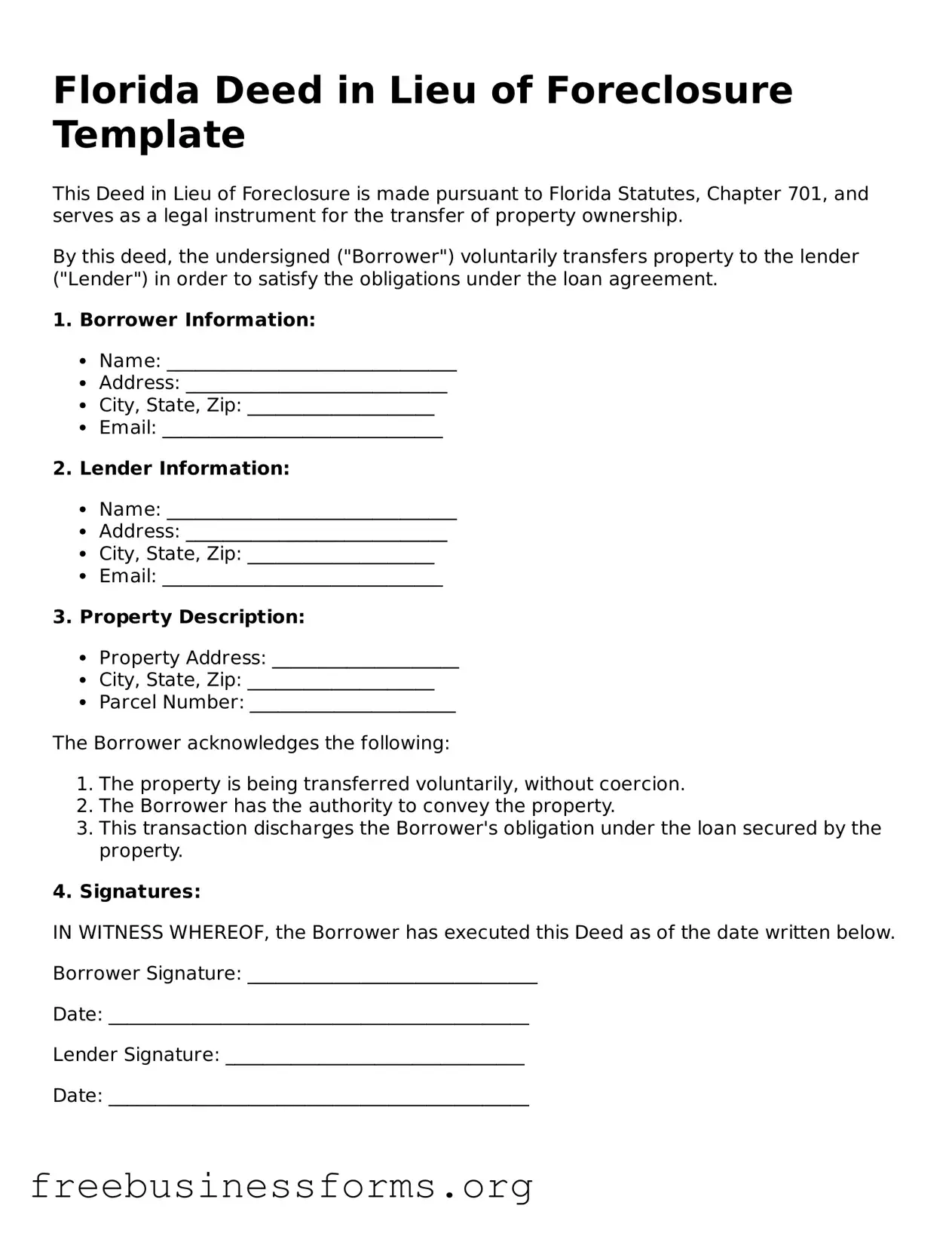Florida Deed in Lieu of Foreclosure Template
This Deed in Lieu of Foreclosure is made pursuant to Florida Statutes, Chapter 701, and serves as a legal instrument for the transfer of property ownership.
By this deed, the undersigned ("Borrower") voluntarily transfers property to the lender ("Lender") in order to satisfy the obligations under the loan agreement.
1. Borrower Information:
- Name: _______________________________
- Address: ____________________________
- City, State, Zip: ____________________
- Email: ______________________________
2. Lender Information:
- Name: _______________________________
- Address: ____________________________
- City, State, Zip: ____________________
- Email: ______________________________
3. Property Description:
- Property Address: ____________________
- City, State, Zip: ____________________
- Parcel Number: ______________________
The Borrower acknowledges the following:
- The property is being transferred voluntarily, without coercion.
- The Borrower has the authority to convey the property.
- This transaction discharges the Borrower's obligation under the loan secured by the property.
4. Signatures:
IN WITNESS WHEREOF, the Borrower has executed this Deed as of the date written below.
Borrower Signature: _______________________________
Date: _____________________________________________
Lender Signature: ________________________________
Date: _____________________________________________
